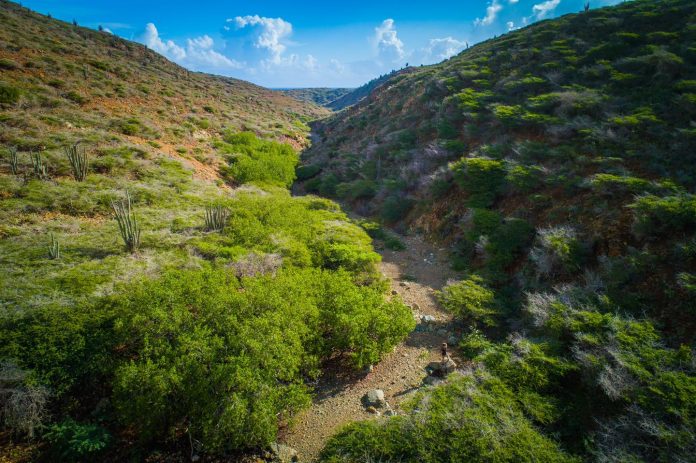Giancarlo Nunes, Conservation Manager of the Aruba National Park Foundation (FPNA) explained during a press conference that Aruba has a long history of development, and there are many different forms of industry which all have an effect on the local nature.
He indicated that for example, aloe plantation, which in the past was located on a large portion of Aruba had its effect. Also during the times of colonization there was development, and during this time, a lot of plants were cut down for wood; at this time, goats, donkeys and horses were introduced as well.
“Obviously when the plants are eliminated, it has a big impact because when you eliminate some plants in Aruba it takes years for them to grow back, sometimes it even takes centuries,” he emphasized.
Right now, Aruba’s latest main industry, tourism, comes with different kinds of development, all of which have an effect on nature and the environment.
Nunes commented that the history of Aruba for the past 500 years of development is one of constant change, and what has to wonder precisely what that change is. Luckily, now they can publish information using data from the 1990s and the investigation they are currently carrying out, at least they can say something about the period since the 1990s until now.
Nunes added that they also have some photographs from the 1950s with which they can make a comparison with current times, but this doesn’t yield a lot of information. “But all that development had an impact on our vegetation, on our nature. We need to realize that we cannot just go do anything and then hope that it won’t bring change, or that nature will not react to it. It is important for us to realize this right now and take it into account for the future”, he highlighted.
Dr. Andre van Proosdij from Wageningen University and Research (WUR) also explained why Aruba’s indigenous plants have disappeared while plants from other regions, imported plants remain and take over the place of the indigenous plants.
“Plants come and plants go, surely on an island, and this is a natural process. But what we see happening worldwide and what is being investigated, is that unique plant types are becoming more unique, and general plant types are becoming more general, and we are seeing this a bit on Aruba as well”, he said.
Proosdij indicated that they do not have concrete numbers yet to support this, but they are aware of some types of plants that disappeared or have almost disappeared in Aruba, while a lot of other new plants that were found came from an entirely different part of the world, or have a big distribution area, from Florida to South America – these are plants that spread fast and that survive.
“So you see that the type of different, unique plants they are having a hard time. These are the types that really can find a place in a protection area in order for them to survive”, he said.
Photographs of different Aruban landscapes from https://www.facebook.com/arubanationalpark

















